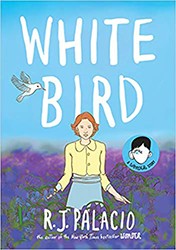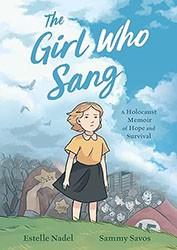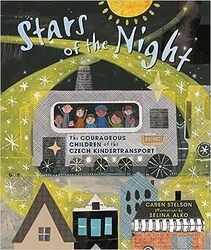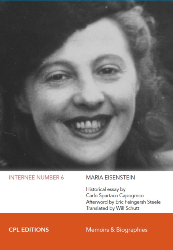Two-thirds of Europe’s Jews were murdered in the Holocaust, and Jewish children had an even more dismal survival rate. Don Brown’s graphic novel chronicles some of the unlikely circumstances under which a few children survived. With clearly presented information, dramatic images of terror, and profound compassion, he contextualizes the people and events that surrounded these exceptional escapes. Two narratives unfold simultaneously: one of terrifying cruelty, and the other of courage and kindness. Brown describes his subjects’ ordeals with unstinting realism and a sense of urgency for the future.
Presenting the totality of the Holocaust within the pages of one book is impossible. Brown knows this, and he approaches his subject through a careful selection of material. Beginning with Depression-era Germany, he demonstrates how fascism was not inevitable, but the result of a country divided. While some sectors of the population supported democracy, socialism, or communism, ultimately, one autocrat who promised to “make Germany great again” gained the obsessive loyalty of the German people. Brown depicts the early appearance of this man for two pages before identifying him as Hitler. He also includes a concise summary of the Nazi leader’s distorted worldview. Although economic and political conditions set the stage for mass murder, Brown makes it clear that there was one individual at the center. Stark black-and-red graphics, as well as the word “NAZI,” accompany his caricature.
The survival of any Jewish children was improbable, and always clouded by tragedy. Brown provides a detailed description of both the Kindertransport and the terrors of Kristallnacht. Yet he doesn’t romanticize the mission to send Jewish children to safety in Britain; he notes that many children faced difficult conditions in a country ambivalent about welcoming any Jewish refugees, and most never saw their parents again. Subsequent sections tell of the fate of children in hiding, who encountered indifference and hatred — but also empathy.
Brown differentiates between the fate of Jews in France, the Netherlands, and Eastern Europe, skillfully using imagery to expand on a relatively terse text. When Dutch rescuers set off a chain of events to save lives, Brown writes, “They grabbed them out of line … snipped off the star of David they wore on their clothes … and passed them on to another person … ” The first panel shows an unsuspecting boy being seized by a rescuer, and the third part of the sequence features the same adult walking away with an expression of fear, as the Jewish boy and another rescuer disappear into the background. Between the two panels is a close-up of a hand holding scissors and removing the star from the boy’s shirt. The sequence illustrates both the risks of the coordinated rescue and the child’s confusion about whether these adults want to harm him or help him.
Scenes in death camps are more limited, since the majority of children there did not survive. There are black, white, and gray pictures of railroad tracks, emaciated prisoners, and lifeless bodies. The absence of text is a testament to those who were lost. When the liberators arrive, Brown acknowledges that surviving children were “a miracle.”
Emily Schneider writes about literature, feminism, and culture for Tablet, The Forward, The Horn Book, and other publications, and writes about children’s books on her blog. She has a Ph.D. in Romance Languages and Literatures.





